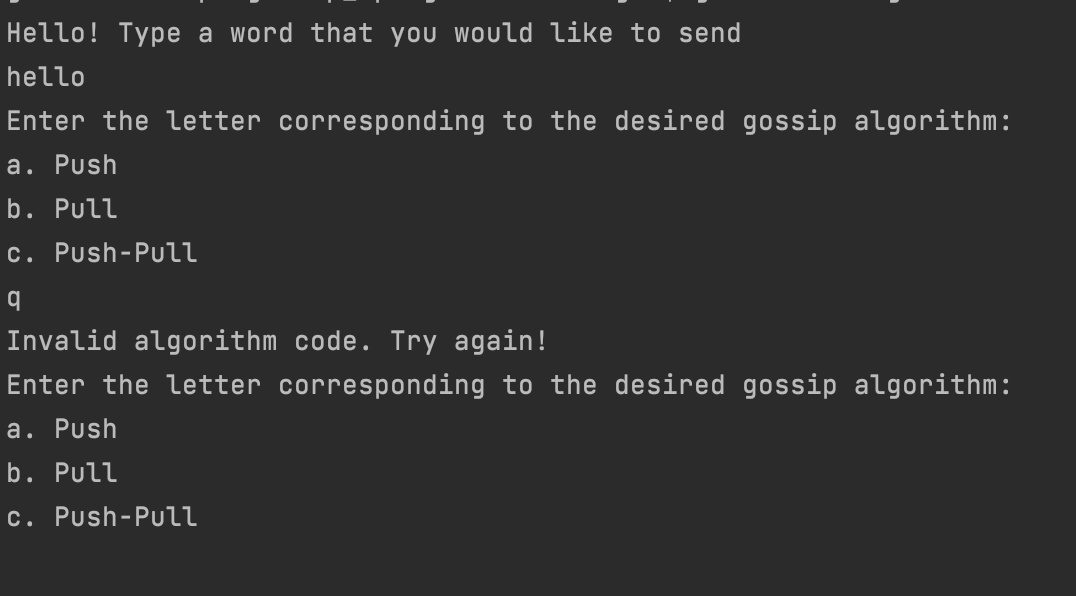ICICB-Galaxy
EVM-compatible chain secured by the Lachesis consensus algorithm.
Building the source
Building galaxy requires both a Go (version 1.14 or later) and a C compiler. You can install them using your favourite package manager. Once the dependencies are installed, run
make galaxy
The build output is build/galaxy executable.
Running galaxy
Going through all the possible command line flags is out of scope here, but we've enumerated a few common parameter combos to get you up to speed quickly on how you can run your own galaxy instance.
Launching a network
Launching galaxy for a network:
$ galaxy --genesis /path/to/genesis.g
Configuration
As an alternative to passing the numerous flags to the galaxy binary, you can also pass a configuration file via:
$ galaxy --config /path/to/your_config.toml
To get an idea how the file should look like you can use the dumpconfig subcommand to export your existing configuration:
$ galaxy --your-favourite-flags dumpconfig
Validator
New validator private key may be created with galaxy validator new command.
To launch a validator, you have to use --validator.id and --validator.pubkey flags to enable events emitter.
$ galaxy --nousb --validator.id YOUR_ID --validator.pubkey 0xYOUR_PUBKEY
galaxy will prompt you for a password to decrypt your validator private key. Optionally, you can specify password with a file using --validator.password flag.
Participation in discovery
Optionally you can specify your public IP to straighten connectivity of the network. Ensure your TCP/UDP p2p port (5050 by default) isn't blocked by your firewall.
$ galaxy --nat extip:1.2.3.4
Dev
Running testnet
The network is specified only by its genesis file, so running a testnet node is equivalent to using a testnet genesis file instead of a mainnet genesis file:
$ galaxy --genesis /path/to/testnet.g # launch node
It may be convenient to use a separate datadir for your testnet node to avoid collisions with other networks:
$ galaxy --genesis /path/to/testnet.g --datadir /path/to/datadir # launch node
$ galaxy --datadir /path/to/datadir account new # create new account
$ galaxy --datadir /path/to/datadir attach # attach to IPC
Testing
Lachesis has extensive unit-testing. Use the Go tool to run tests:
go test ./...
If everything goes well, it should output something along these lines:
ok github.com/goicicb/app 0.033s
? github.com/goicicb/cmd/cmdtest [no test files]
ok github.com/goicicb/cmd/galaxy 13.890s
? github.com/goicicb/cmd/galaxy/metrics [no test files]
? github.com/goicicb/cmd/galaxy/tracing [no test files]
? github.com/goicicb/crypto [no test files]
? github.com/goicicb/debug [no test files]
? github.com/goicicb/ethapi [no test files]
? github.com/goicicb/eventcheck [no test files]
? github.com/goicicb/eventcheck/basiccheck [no test files]
? github.com/goicicb/eventcheck/gaspowercheck [no test files]
? github.com/goicicb/eventcheck/heavycheck [no test files]
? github.com/goicicb/eventcheck/parentscheck [no test files]
ok github.com/goicicb/evmcore 6.322s
? github.com/goicicb/gossip [no test files]
? github.com/goicicb/gossip/emitter [no test files]
ok github.com/goicicb/gossip/filters 1.250s
? github.com/goicicb/gossip/gasprice [no test files]
? github.com/goicicb/gossip/occuredtxs [no test files]
? github.com/goicicb/gossip/piecefunc [no test files]
ok github.com/goicicb/integration 21.640s
Also it is tested with fuzzing.
Operating a private network (fakenet)
Fakenet is a private network optimized for your private testing. It'll generate a genesis containing N validators with equal stakes. To launch a validator in this network, all you need to do is specify a validator ID you're willing to launch.
Pay attention that validator's private keys are deterministically generated in this network, so you must use it only for private testing.
Maintaining your own private network is more involved as a lot of configurations taken for granted in the official networks need to be manually set up.
To run the fakenet with just one validator (which will work practically as a PoA blockchain), use:
$ galaxy --fakenet 1/1
To run the fakenet with 5 validators, run the command for each validator:
$ galaxy --fakenet 1/5 # first node, use 2/5 for second node
If you have to launch a non-validator node in fakenet, use 0 as ID:
$ galaxy --fakenet 0/5
After that, you have to connect your nodes. Either connect them statically or specify a bootnode:
$ galaxy --fakenet 1/5 --bootnodes "enode://[email protected]:5050"
Running the demo
For the testing purposes, the full demo may be launched using:
cd demo/
./start.sh # start the Galaxy processes
./stop.sh # stop the demo
./clean.sh # erase the chain data
Make config file
./galaxy --genesis --rpc -rpcaddr 0.0.0.0 --datadir=d:/icicb/galaxy --rpcapi "net,eth,txpool,web3" --maxpeers 128 --maxpendpeers 128 --txpool.globalqueue 4096 dumpconfig > d:/icicb/config.toml
Running fakenet
./build/galaxy --fakenet 1/1 --http --http.addr="127.0.0.1" --http.port=5050 --http.corsdomain="*" --http.api="eth,debug,net,admin,web3,personal,txpool,icicb,dag" --datadir=d:/icicb/fake







